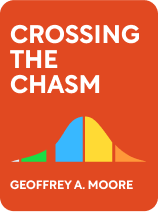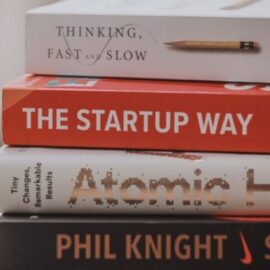

This article is an excerpt from the Shortform book guide to "Crossing the Chasm" by Geoffrey Moore. Shortform has the world's best summaries and analyses of books you should be reading.
Like this article? Sign up for a free trial here .
Are you looking for Crossing the Chasm quotes by Geoffrey Moore? What are some of the most noteworthy passages worth revisiting?
In Crossing the Chasm, Geoffrey Moore outlines a strategy that companies can use to move their products across this “chasm” to enter the mainstream market. Since the book’s publication, it has become a standard text for managers, engineers, and students, as well.
Here’s a selection of top Crossing the Chasm quotes with explanations.
Crossing the Chasm: Marketing and Selling High-Tech Products to Mainstream Customers
Periodically, a new high-tech innovation will transform the way we live or do business and propel its inventors to wealth and fame. In his book Crossing the Chasm, Moore argues that there’s a little-recognized gap or “chasm” in this model between the early market and the mainstream market—and failure to cross this gap accounts for the failure of many high-tech products.
The following Crossing the Chasm quotes highlight the key points of Moore’s theory.
“Chasm crossing is not the end, but rather the beginning, of mainstream market development.”
According to Moore, it’s impossible to break into the mainstream market without crossing the chasm. By far the largest chasm in Moore’s revised TALC is between the early adopters and the early majority.
Moore explains that early adopters assess new technology at a technical level, to determine if it can give them a strategic advantage, whereas the early majority assess it based on its reputation and standardization. Because they value different things, the early majority won’t look to the opinions of early adopters when deciding whether to buy your product.
This creates a catch-22, because the early majority won’t buy your product until it has built up a good reputation in their industry, but your product can’t build up a good reputation until they start buying it and using it.
“The key to getting beyond the enthusiasts and winning over a visionary is to show that the new technology enables some strategic leap forward, something never before possible, which has an intrinsic value and appeal to the nontechnologist.”
Innovators and early adopters represent the two early-market categories of customers in the Technology Adoption Life Cycle (TALC). Innovators (enthusiasts) are the first to try out new technologies for their own sake. Unlike innovators, early adopters (the visionaries) are not interested in new technology for its own sake, but rather in the new advantages it may afford. While innovators will buy your new, experimental technology out of pure curiosity, you will have to work to win over visionaries by showing them that your product will give them some kind of edge.
“Surround your disruptive core product, the thing that got you to the dance, with a whole product that solves for the target customer’s problem end to end. That will keep you on the dance floor for a long time to come.”
When you make a sale, you’re typically only obligated to deliver the core product. However, while innovators and early adopters (the early market) are usually willing to take ownership of assembling the whole product for themselves, the early majority are not. If you fail to supply the whole product (a complete solution without native or third-party add-ons), you are risking losing those customers.

———End of Preview———
Like what you just read? Read the rest of the world's best book summary and analysis of Geoffrey Moore's "Crossing the Chasm" at Shortform .
Here's what you'll find in our full Crossing the Chasm summary :
- An explanation of the chasm phenomenon that many new high-tech products face
- How to pilot a product across this chasm to mainstream success
- The problems with the Technology Adoption Life Cycle (TALC) model






